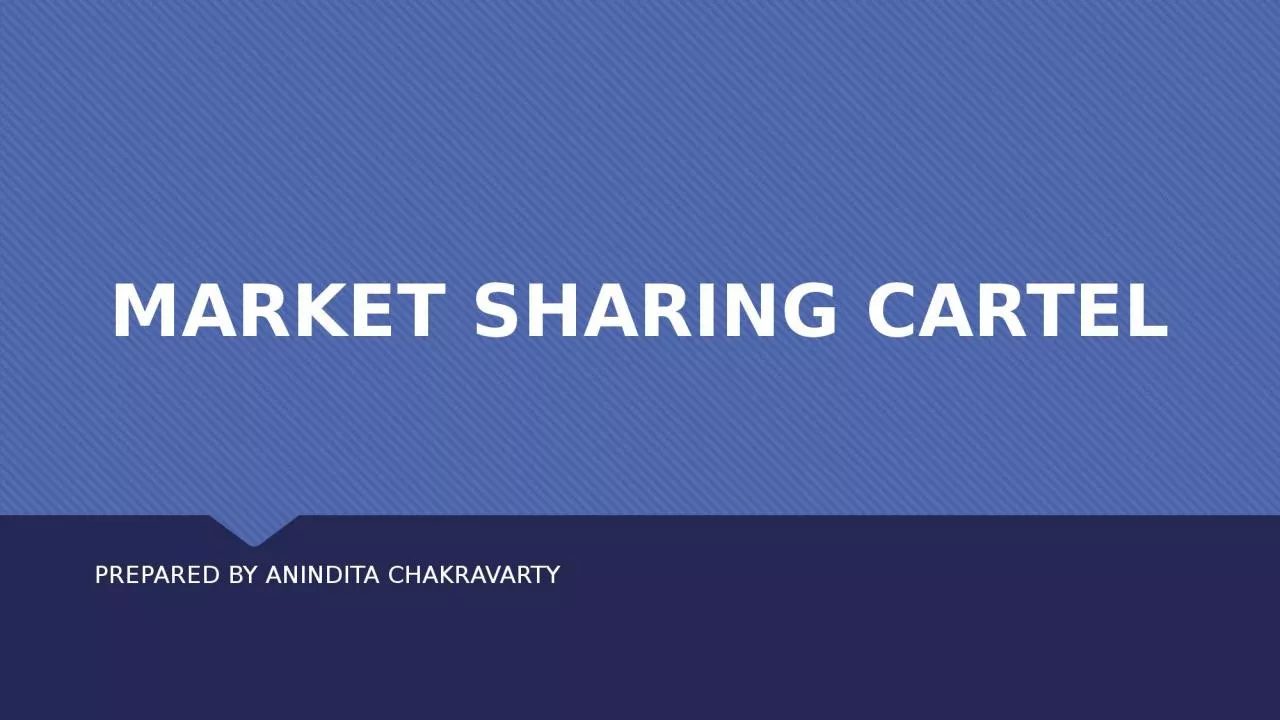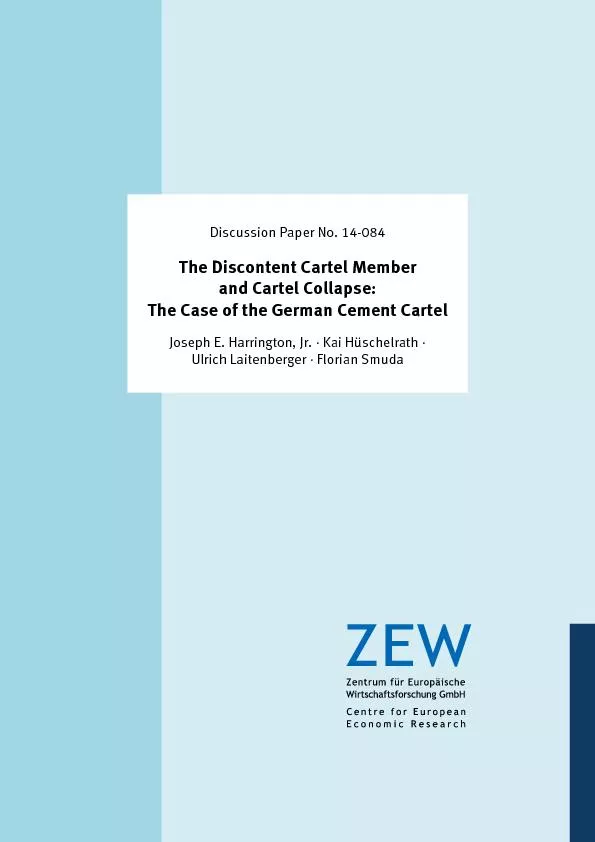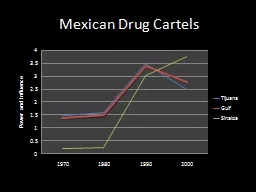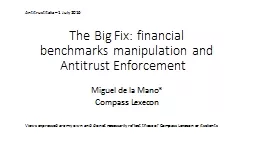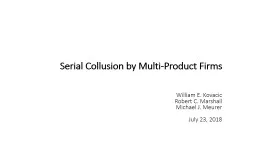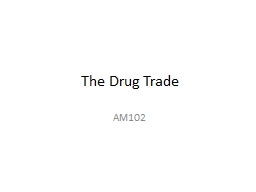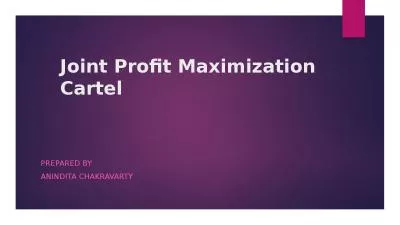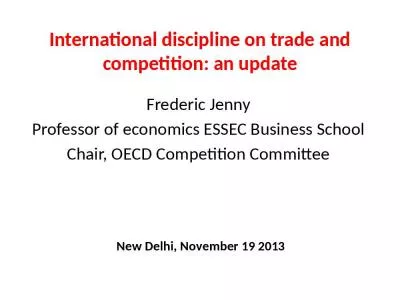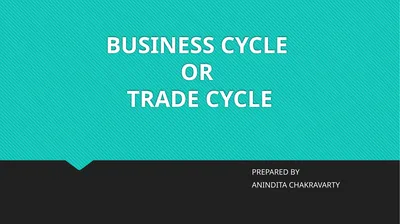PPT-MARKET SHARING CARTEL PREPARED BY ANINDITA CHAKRAVARTY
Author : emma | Published Date : 2023-11-03
INTRODUCTION Another type of perfect collusion in an oligopolistic market is found in practice which relates to marketsharing by the member firms of a cartel The
Presentation Embed Code
Download Presentation
Download Presentation The PPT/PDF document "MARKET SHARING CARTEL PREPARED BY ANINDI..." is the property of its rightful owner. Permission is granted to download and print the materials on this website for personal, non-commercial use only, and to display it on your personal computer provided you do not modify the materials and that you retain all copyright notices contained in the materials. By downloading content from our website, you accept the terms of this agreement.
MARKET SHARING CARTEL PREPARED BY ANINDITA CHAKRAVARTY: Transcript
Download Rules Of Document
"MARKET SHARING CARTEL PREPARED BY ANINDITA CHAKRAVARTY"The content belongs to its owner. You may download and print it for personal use, without modification, and keep all copyright notices. By downloading, you agree to these terms.
Related Documents

